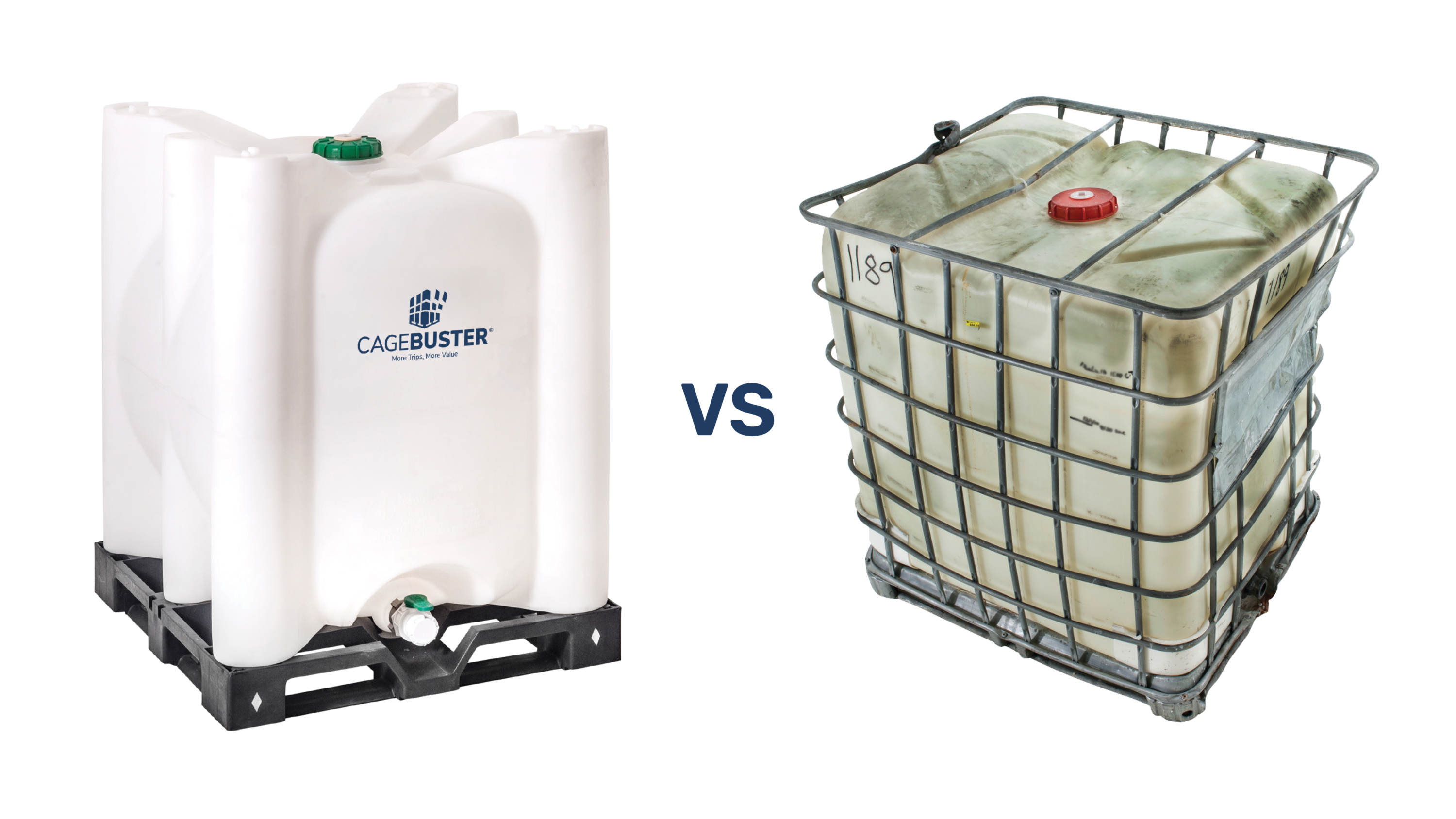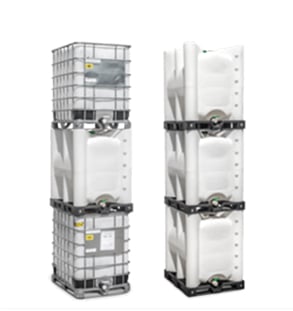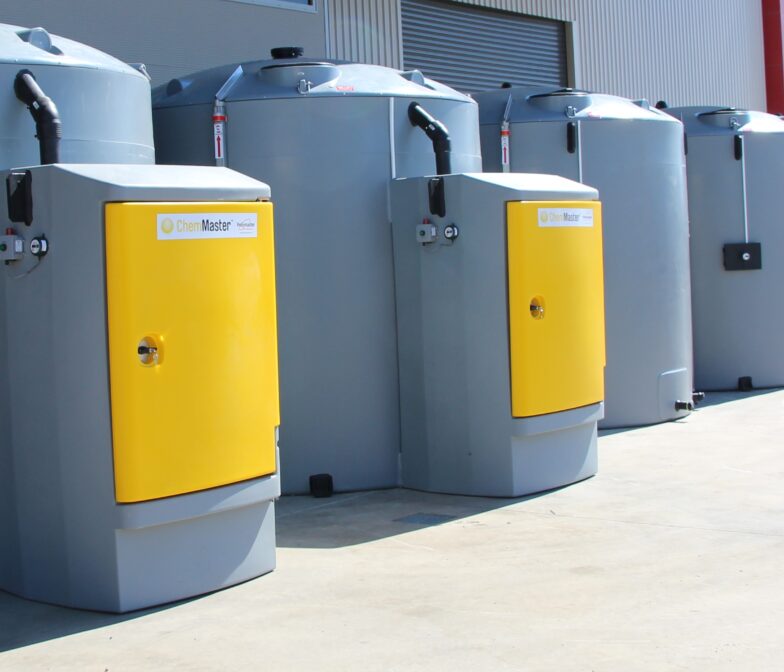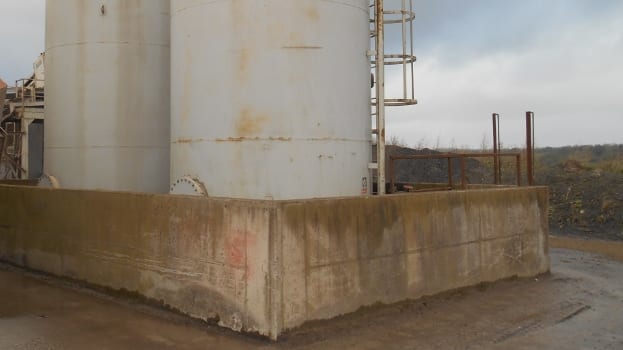IBC Totes in Chemical Industries: Caged vs. Cageless Options
Introduction
Intermediate Bulk Containers (IBCs) are essential for chemical companies, providing a safe and efficient way to store and transport liquids. With multiple designs available, the choice between traditional caged IBCs and cageless alternatives significantly impacts operational efficiency, costs, and environmental sustainability.
In this article, we’ll explore the role of IBCs in the chemical industry, compare caged and cageless options, and highlight Polymaster’s CageBuster IBC Tote as a durable cageless solution designed for modern industrial needs.
What Are IBC Totes and How Are They Used in Chemical Industries?
IBCs are large, industrial-grade containers—typically holding between 1,000 and 1,250 litres (275 to 330 gallons)—designed for storing and transporting bulk liquids or granulated materials. Their pallet-mounted, stackable design enhances efficiency in shipping and warehousing.
In the chemical industry, IBCs are indispensable for:
- Hazardous Material Transport – Ensuring safe handling of acids, solvents, and other Group II and III substances under stringent regulations.
- Bulk Storage – Holding raw materials or intermediate chemicals during production processes.
- Distribution – Delivering chemicals to agricultural, pharmaceutical, manufacturing, food and beverage, and water treatment clients.
Given the hazardous nature of many chemicals, safety, durability, and regulatory compliance are key factors when selecting an IBC.

Caged vs. Cageless IBCs: Key Differences
Chemical companies typically choose between two main IBC types: traditional caged designs and modern cageless alternatives. Here’s how they compare:
Construction and Durability
- Caged IBCs – Feature a plastic inner bottle enclosed in a metal cage. While the cage provides structural stability, it is susceptible to rust, corrosion, and physical damage, often limiting its lifespan to 5-10 trips.
- Cageless IBCs – Constructed from thicker, heavy-duty materials (usually polyethylene) without a metal frame. This design minimises failure points, allowing for a lifespan of 40+ trips.
Cost Considerations
- Caged IBCs – Lower initial cost but prone to higher maintenance expenses (e.g., cage repairs) and frequent replacements.
- Cageless IBCs – Higher upfront investment but longer-lasting and lower maintenance, making them more cost-effective over time.
Environmental Impact
- Caged IBCs – Difficult to recycle due to mixed metal and plastic components. Their shorter lifespan contributes to increased waste generation.
- Cageless IBCs – Often fully recyclable and designed for extended reuse, reducing landfill contributions and supporting sustainability initiatives.
Safety and Maintenance
- Caged IBCs – Metal cages can rust and trap residue, leading to contamination risks. Drainage efficiency may also be compromised.
- Cageless IBCs – Easier to clean, featuring smooth inner surfaces and sloped drains that minimise chemical residue, making them ideal for handling hazardous materials.
For chemical companies, caged IBCs are suitable for short-term, budget-conscious operations, while cageless designs provide greater durability and sustainability for long-term use.
Spotlight: CageBuster IBC Totes – A Cageless Solution
An outstanding example of a cageless IBC is Polymaster’s CageBuster, specifically engineered for chemical industry applications.

What Makes CageBuster Stand Out?
- Heavy-Duty Build – Made from 100% high-density polyethylene with walls three times thicker than standard caged bottles, offering superior resistance to corrosion, impact, and chemical wear.
- Safety-Certified – UN 31H2 certified for Group II & III hazardous materials, featuring a freestanding design and a sloped drain trough for complete and efficient emptying.
- Eco-Conscious Design – 100% recyclable and supports a 40+ trip lifespan, significantly reducing environmental waste.
- Operational Efficiency – Stackable with innovative lugs for compatibility with caged IBCs. Offers customisable valves and lids for added flexibility.
- The CageBuster is ideal for chemical manufacturing, agricultural chemical distribution, pharmaceutical storage, food processing, and wastewater management, where compliance, durability, and efficiency are critical.
Conclusion
IBCs are an integral part of chemical storage and transport but choosing between caged and cageless designs depends on your company’s priorities—short-term cost savings or long-term operational efficiency. While caged IBCs remain a familiar option, cageless solutions like the CageBuster offer greater safety, durability, and sustainability.
By understanding these key differences, businesses can optimise their storage and transport strategies to align with both economic and environmental goals.
Learn More
Read more on our Cagebuster IBC Tote webpage.
More Similar News
View all News
Eliminate OH&S issues associated with IBC handling with a purpose-built IBC bund enclosure

Sodium Hypochlorite in Water Treatment Plants: An Essential Component for Safe and Clean Water

